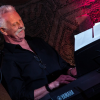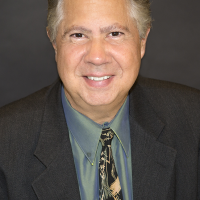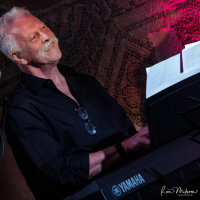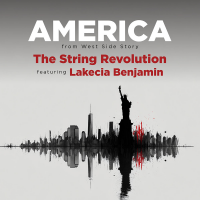Home » Jazz Musicians » Hampton Hawes
Hampton Hawes
Who Was Hampton Hawes?
Although one rarely hears of Hampton Hawes today hewas a significant presence on the jazz scene in the mid-50s then again from the mid-60s on until his death in1977. A direct descendant of bebop who had beenvariously classified as "West Coast" and "funk-jazz" or"rhythm school," Hawes transcended all thesecategories. He was famous for his prodigious right hand,his deep groove, his very personal playing, his profoundblues conceptions, and his versatility within a mainstreamcontext. He remained anchored in chord-change basedjazz with chord changes his whole career.
A mostly self-taught musician, he matured early musicallyand late personally-by his own admission. His lifeunfolded as an impassioned story of a rise from povertyinto prominence, then a fall due to a heroin addiction,which had come right out of his native culture, five yearsin prison and a miraculous Presidential pardon, thenpersonal transformation and return to world-wide artisticprominence for a decade before his early death.
Origins
Hampton Hawes was born in Los Angeles, November 13,1928. His father was a very successful pastor and hismother played piano in the church. Hampton was raisedin a strict religious environment. As a child he would sit onthe piano bench next to his mother and watch her play.His earliest musical influence, therefore, was gospelpiano music. The street environment was not aparticularly wholesome. He later reflected that most ofthe people he knew in his neighborhood growing up wereheroin addicts.
Hawes taught himself piano as a child. His earliestmusical influences were boogie-woogie, which wasintensely popular in the U. S. between 1938 and 1946,Nat Cole, Fats Waller and Art Tatum. Later he cameunder the spell of Bud Powell, and came to play more inhis style. Throughout his life he regretted that he neveracquired a classical background and never became afast music reader. Perhaps as a result his musicremained intensely personal.
Growing up with music he learned by jamming with hisfriends. They would hang out at each other's houses andplay. Fascinated with bebop, they fervently pursued it astheir form of teenage rebellion against the music of theirparents. Hawes regretted that his family neverunderstood his music, never attended his performances.When he sent them his albums later on, if they liked thecover art they'd frame it and put it on the wall.
Turning Pro
By the time he was in high school he was acceptingprofessional gigs, working with Big Jay McNeely in 1944.He even had to leave his high school graduation early toget to a job. At that time in his life he played with CharlieParker, Billie Holiday, Wardell Gray, Dexter Gordon, ArtPepper and Short Rogers. Pepper hired him for anextended engagement at the Surf Club in Hollywood in1952. By that time he had become a heroin addict. As heput it:
Read moreTags
Shelly Manne: Jazz from the Pacific Northwest

by Stefano Merighi
I luoghi comuni sono vacui ma spesso azzeccano un frammento di sincerità. Dire che il jazz californiano anni '50 annacqua e depotenzia la forza afroamericana di questa musica è riduttivo, certo, ma indiscutibile almeno in certe sue declinazioni. È il caso di queste registrazioni del quintetto di Shelly Manne, frutto del concerto al festival di Monterey del 1958, recuperate e pubblicate dalla Real to Real, in un doppio CD che contiene anche alcuni brani di otto anni dopo, ...
Continue ReadingHampton Hawes: For Real!

by Richard J Salvucci
There are, Scott Fitzgerald famously wrote, no second acts in American life. For pianist Hampton Hawes, born in 1928, there was scarcely a first. No sooner was he established as an up-and-coming talent than he was drafted into the Army. When he got out, he tried to pick up where he left off. A heroin habit he had acquired prior to military service led to a harsh incarceration because he refused to become an informer. Only a grant of clemency ...
Continue ReadingShelly Manne & His Men: Jazz From The Pacific Northwest

by Pierre Giroux
Shelly Manne & His Men are presented in two iterations in never-before-released live recordings from the 1958 Monterey Jazz Festival and from a 1966 date at The Penthouse in Seattle entitled Jazz From The Pacific Northwest. In this deluxe limited edition 180-gram 2LP set, co-produced for release by the estimable Zev Feldman and Cory Weeds, the band captivated the audience with intricate melodies and vibrant improvisations driven by Manne's virtuosic drumming. The band on LP1 from ...
Continue ReadingSonny Rollins: Go West! The Contemporary Records Albums

by Richard J Salvucci
Apparently, the median age of a jazz listener is in his or her mid to late 40s. So, perhaps, the representative listener was born in the mid-1970s. Sonny Rollins first recorded in 1949. The recordings reviewed here were made in the late 1950s, well before many contemporary listeners were born. While there have been ample reissues of Rollins' work, most coincided with the still-active phase of his career. Much of his work has appeared since “Skylark" on The Next Album ...
Continue ReadingOutstanding Hampton

by Patrick Burnette
It's time for a deep dive, listeners, and the subject this round is underappreciated West Coast keyboard wizard Hampton Hawes. Hawes did most of his best-known recordings for Contemporary Jazz, and we'll look at a couple of releases on that storied (but also underappreciated) label, as well as a collaboration with Charles Mingus and a sample of Hampton's seventies output, when the sideburns got longer and the keyboards got plugged in. Playlist General discussion of Hampton Hawes 6:15 ...
Continue ReadingCharles Mingus: Mingus Three (Deluxe Edition)

by Chris May
The 100th anniversary of the birth of the Promethean genius Charles Mingus falls on April 22, 2022--and Rhino/Parlophone are releasing a 2 x CD edition of Mingus Three (aka Trio, Jubilee, 1957) to coincide. Disc one contains the original LP, vibrantly remastered by Dominique Brethes at Flow Mastering in London. Disc two consists of six previously unreleased outtakes, recently discovered in the Parlophone tape library and mastered by Brethers; also included are two untitled blues from the same session.
Continue ReadingHarold Land: Westward Bound!

by Peter J. Hoetjes
One can't help but wonder how large the stage may have been for tenor saxophonist Harold Land had he not tethered himself to the west coast for the majority of his career. In 1954 Land moved from Santa Monica to Los Angeles and quickly earned himself a place in the immensely popular Clifford Brown/Max Roach band, beginning with the aptly named Jam Session (EmArcy, 1954). Called back to Los Angeles in 1956 by the responsibilities of being a ...
Continue ReadingJazz Musician of the Day: Hampton Hawes

Source:
Michael Ricci
All About Jazz is celebrating Hampton Hawes' birthday today!
Who Was Hampton Hawes? Although one rarely hears of Hampton Hawes today he was a significant presence on the jazz scene in the mid- 50s then again from the mid-60s on until his death in 1977. A direct descendant of bebop who had been variously classified as “West Coast" and “funk-jazz" or “rhythm school," Hawes transcended all these categories. He was famous for his prodigious right hand, his deep groove, his ...
read more
Jazz Musician of the Day: Hampton Hawes

Source:
Michael Ricci
All About Jazz is celebrating Hampton Hawes' birthday today!
Who Was Hampton Hawes? Although one rarely hears of Hampton Hawes today he was a significant presence on the jazz scene in the mid- 50s then again from the mid-60s on until his death in 1977. A direct descendant of bebop who had been variously classified as “West Coast" and “funk-jazz" or “rhythm school," Hawes transcended all these categories. He was famous for his prodigious right hand, his deep groove, his ...
read more
Jazz Musician of the Day: Hampton Hawes

Source:
Michael Ricci
All About Jazz is celebrating Hampton Hawes' birthday today!
Who Was Hampton Hawes? Although one rarely hears of Hampton Hawes today he was a significant presence on the jazz scene in the mid- 50s then again from the mid-60s on until his death in 1977. A direct descendant of bebop who had been variously classified as “West Coast" and “funk-jazz" or “rhythm school," Hawes transcended all these categories. He was famous for his prodigious right hand, his deep groove, his ...
read more
Jazz Musician of the Day: Hampton Hawes

Source:
Michael Ricci
All About Jazz is celebrating Hampton Hawes' birthday today!
Who Was Hampton Hawes? Although one rarely hears of Hampton Hawes today he was a significant presence on the jazz scene in the mid- 50s then again from the mid-60s on until his death in 1977. A direct descendant of bebop who had been variously classified as “West Coast" and “funk-jazz" or “rhythm school," Hawes transcended all these categories. He was famous for his prodigious right hand, his deep groove, his ...
read more
Jazz Musician of the Day: Hampton Hawes

Source:
Michael Ricci
All About Jazz is celebrating Hampton Hawes' birthday today!
Who Was Hampton Hawes? Although one rarely hears of Hampton Hawes today he was a significant presence on the jazz scene in the mid- 50s then again from the mid-60s on until his death in 1977. A direct descendant of bebop who had been variously classified as “West Coast" and “funk-jazz" or “rhythm school," Hawes transcended all these categories. He was famous for his prodigious right hand, his deep groove, his ...
read more
Jazz Musician of the Day: Hampton Hawes

Source:
Michael Ricci
All About Jazz is celebrating Hampton Hawes' birthday today!
Who Was Hampton Hawes? Although one rarely hears of Hampton Hawes today he was a significant presence on the jazz scene in the mid- 50s then again from the mid-60s on until his death in 1977. A direct descendant of bebop who had been variously classified as “West Coast" and “funk-jazz" or “rhythm school," Hawes transcended all these categories. He was famous for his prodigious right hand, his deep groove, his ...
read more
Hampton Hawes: All Night

Source:
JazzWax by Marc Myers
I've never been a huge fan of pianist Hampton Hawes. His keyboard assault on many leadership trio albums are frantic and more concerned with speed and percussive impact than harnessed intensity. The result is a jarring listen followed by a headache. Dazzling jazz pianists who skillfully held their emotional horses include Art Tatum, Bud Powell, Al Haig, Erroll Garner and Billy Taylor, to name just a few. The burner under Hawes's proverbial pan was up way too high when he ...
read more
Jazz Musician of the Day: Hampton Hawes

Source:
Michael Ricci
All About Jazz is celebrating Hampton Hawes' birthday today!
Who Was Hampton Hawes? Although one rarely hears of Hampton Hawes today he was a significant presence on the jazz scene in the mid- 50s then again from the mid-60s on until his death in 1977. A direct descendant of bebop who had been variously classified as “West Coast" and “funk-jazz" or “rhythm school," Hawes transcended all these categories. He was famous for his prodigious right hand, his deep groove, his ...
read more
Jazz Musician of the Day: Hampton Hawes

Source:
Michael Ricci
All About Jazz is celebrating Hampton Hawes' birthday today! Who Was Hampton Hawes? Although one rarely hears of Hampton Hawes today he was a significant presence on the jazz scene in the mid- 50s then again from the mid-60s on until his death in 1977. A direct descendant of bebop who had been variously classified as “West Coast" and “funk-jazz" or “rhythm school," Hawes transcended all these categories. He was famous for his prodigious right hand, his deep groove, his ...
read more
Jazz Musician of the Day: Hampton Hawes

Source:
Michael Ricci
All About Jazz is celebrating Hampton Hawes' birthday today! Who Was Hampton Hawes? Although one rarely hears of Hampton Hawes today he was a significant presence on the jazz scene in the mid- 50s then again from the mid-60s on until his death in 1977. A direct descendant of bebop who had been variously classified as “West Coast" and “funk-jazz" or “rhythm school," Hawes transcended all these categories. He was famous for his prodigious right hand, his deep groove, his ...
read more

















































